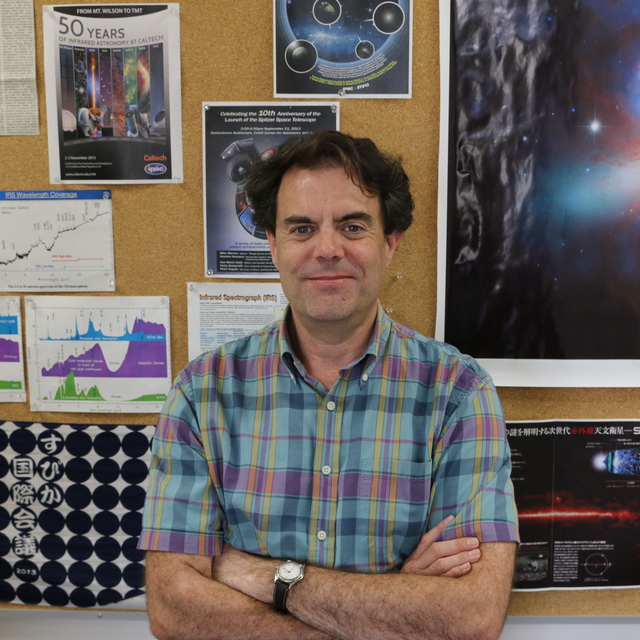October
2018
•
2018ApJ...866...79B
Authors
•
Boehle, A.
•
Larkin, J. E.
•
Armus, L.
•
Wright, S. A.
Abstract
•
We present high spatial resolution, integral field spectrograph (IFS) observations of the nearby low-ionization nuclear emission-line region (LINER) galaxy NGC 404 at 1.25 μm (J band) and 2.2 μm (K band) near-infrared (NIR) wavelengths. Although NGC 404 is thought to host an intermediate-mass black hole (BH) at its center, it has been unclear whether accretion onto the BH or another mechanism such as shock excitation drives its LINER emission at optical/NIR wavelengths. We use the OSIRIS IFS at Keck Observatory behind laser guide star adaptive optics to map the strength and kinematics of [Fe II], H2, and hydrogen recombination lines at spatial resolutions of 1 pc across the central 30 pc of the galaxy. The H2 gas is in a central rotating disk, and ratios of multiple H2 lines indicate that the molecular gas is thermally excited, with some contribution from UV fluorescence. The [Fe II] emission is more extended and diffuse than the molecular gas and has a different kinematic structure that reaches higher velocities/dispersions. We also map the strength of the CO stellar absorption feature and constrain the dominant age of the nuclear stellar population to ∼1 Gyr. Finally, we find regions across the nucleus of NGC 404 with [Fe II]/Paβ line ratios up to 6.5, ∼2.5 times higher than the ratio measured from spatially integrated spectra. From these high line ratios, we conclude that shocks are the dominant physical mechanism exciting NGC 404's LINER emission and argue that a possible source of this shock excitation is a supernova remnant.
Links




